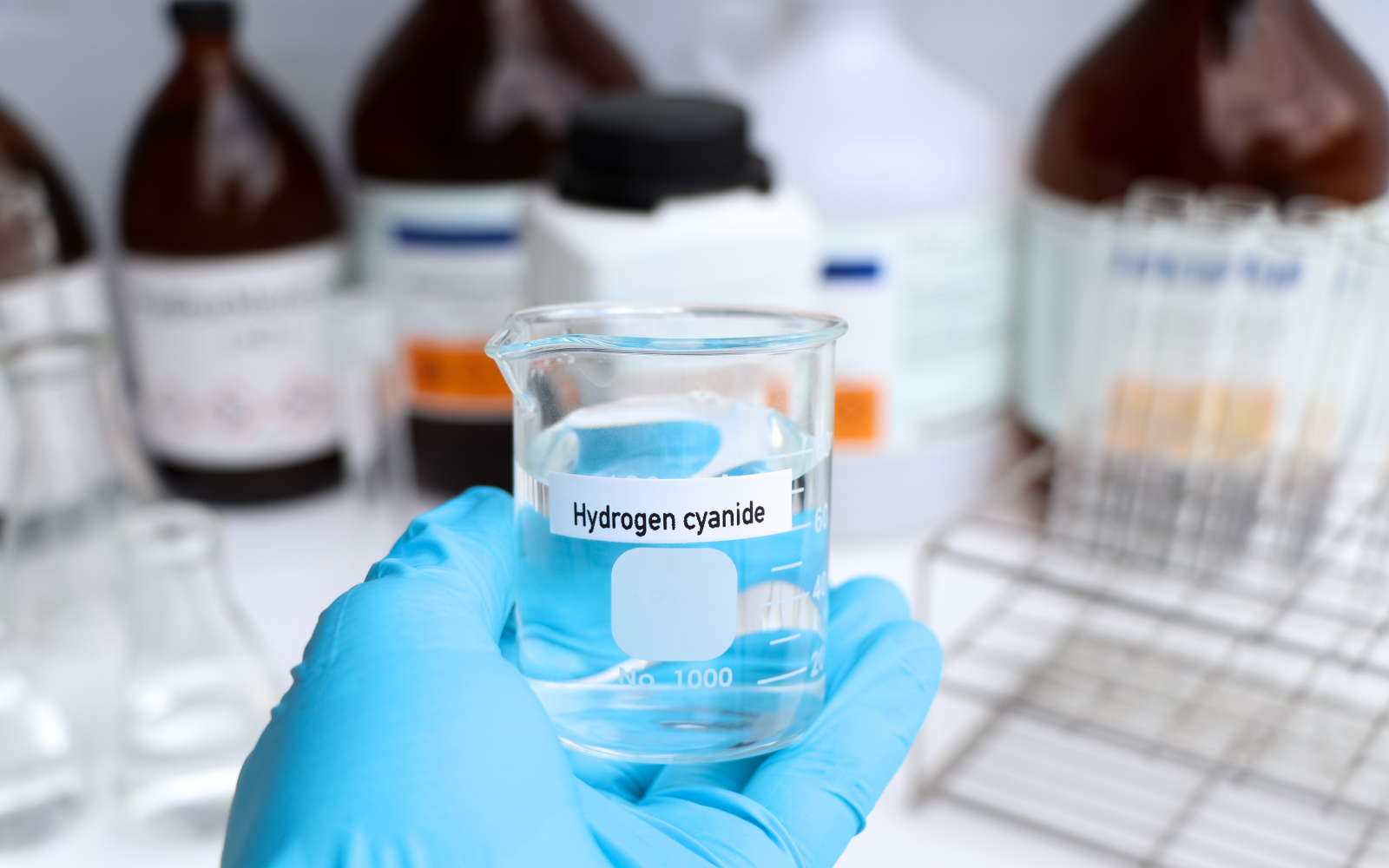Hydrogen Cyanide (HCN) is a colorless, highly poisonous gas with a faint, bitter almond odor. It is a volatile substance, often used in chemical synthesis and various industrial applications.
Given its high toxicity, understanding the health risks associated with HCN exposure and implementing effective safety protocols are critical for protecting workers in industrial environments.
This article explores the health effects of HCN, its applications, and essential safety measures.
Health Effects of Hydrogen Cyanide Exposure
Hydrogen Cyanide is a potent toxicant that can rapidly affect the human body, particularly the respiratory and central nervous systems. The severity of its effects depends on the concentration and duration of exposure.
Acute Exposure
- Respiratory Distress: Inhalation of HCN can lead to rapid respiratory distress, characterized by difficulty breathing, chest tightness, and a feeling of suffocation. At high concentrations, HCN can cause respiratory failure and death within minutes.
- Neurological Effects: HCN disrupts the body’s ability to use oxygen, leading to symptoms such as headache, dizziness, confusion, and seizures. Severe exposure can result in loss of consciousness and potentially fatal brain damage.
- Cardiovascular Effects: HCN exposure can cause cardiovascular issues, including hypotension (low blood pressure) and arrhythmias, which can be life-threatening.
Chronic Exposure
- Chronic Toxicity: Prolonged exposure to low levels of HCN may lead to chronic health conditions, including persistent headaches, weakness, and neurological impairments.
- Dermal and Ocular Irritation: Repeated skin contact with HCN can cause irritation and dermatitis, while eye exposure may result in conjunctivitis and other eye problems.
Industries and Applications
Hydrogen Cyanide is utilized in a range of industrial processes, making it a significant concern for workplace safety. Key applications include:
- Chemical Manufacturing: HCN is a precursor in the production of various chemicals, including acrylonitrile, adiponitrile, and cyanide salts, which are used in the manufacture of plastics, synthetic fibers, and other products.
- Mining and Metallurgy: HCN is used in the extraction of gold and silver from ores, a process known as cyanidation.
- Pesticides and Fumigants: It is also employed as a fumigant in pest control and as a component in certain pesticides.
Safety Considerations and Best Practices
Given the high toxicity of hydrogen cyanide, strict safety protocols must be followed to prevent exposure and ensure worker safety.
Monitoring and Detection
- Gas Detection Systems: Reliable HCN gas detectors, such as the Accusafe or GasD 8000 by Interscan, are essential for monitoring air quality and detecting HCN levels. These systems should be regularly tested and calibrated to maintain accuracy.
- Ventilation: Proper ventilation, including local exhaust systems, is crucial to prevent the accumulation of HCN in the air. This helps maintain a safe working environment.
Personal Protective Equipment (PPE)
- Respiratory Protection: Full-face respirators or self-contained breathing apparatus (SCBA) should be used when working in areas with potential HCN exposure.
- Skin and Eye Protection: Protective clothing, gloves, and eye protection are necessary to prevent skin and eye contact with HCN.
Emergency Response and Training
- Emergency Protocols: Emergency response plans should include procedures for immediate evacuation, decontamination, and medical treatment in case of HCN exposure. Safety showers and eyewash stations should be easily accessible.
- Training and Education: Workers should be trained on the hazards of HCN, proper use of PPE, and emergency response measures. Regular drills and training updates are crucial for maintaining preparedness.
Lesser-Known Insights and Considerations
- Detection Challenges: HCN has a faint odor that may not be detectable by all individuals, making reliance on odor as a warning signal unreliable. Continuous monitoring is therefore essential.
- Chemical Reactivity: HCN can react with various substances, including strong acids and bases, potentially forming other hazardous compounds. Proper storage and handling procedures should be followed to prevent accidental reactions.
Conclusion
Hydrogen Cyanide is a highly toxic chemical with diverse industrial applications, requiring stringent safety measures to protect workers. Understanding the health effects of HCN exposure, implementing robust monitoring systems, and adhering to safety protocols are vital for ensuring workplace safety.
For more information on HCN gas detection systems and to request a quote for the Accusafe or GasD 8000 by Interscan, contact us today. Safeguard your workforce with advanced gas detection solutions tailored to your industry’s needs.


